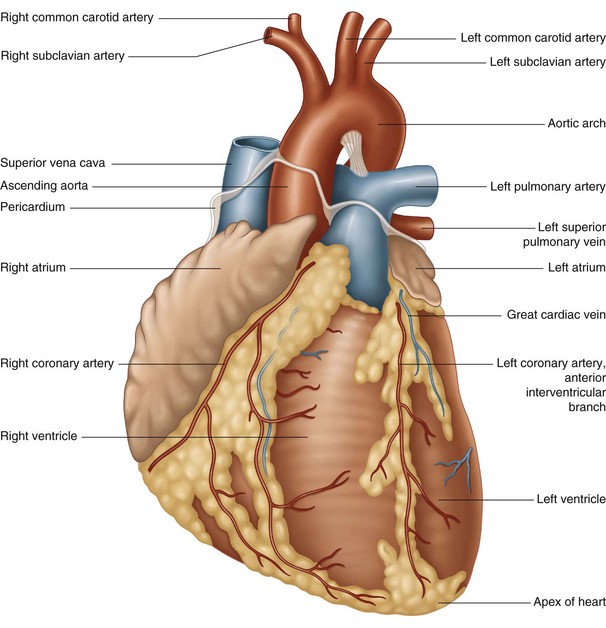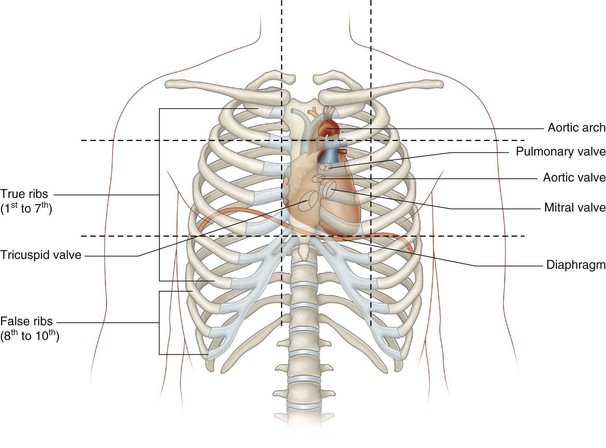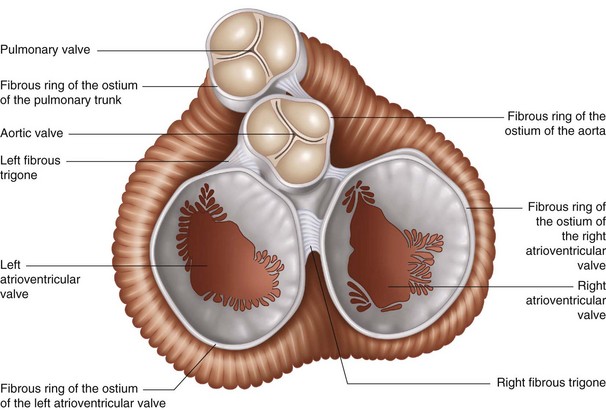9 The heart
9.1 Anatomy review
9.1.1 External configuration
• The right border of the heart corresponds to the right atrium, and extends between the superior vena cava and the inferior vena cava. The right coronary artery runs in the coronary groove separating the atria from the ventricles. The anatomical landmark of the right border is approximately one fingerwidth from the right border of the sternum.
• The left border of the heart is formed mainly by the left ventricle and, to a slight extent, superiorly by the auricle of the left atrium. The anatomical landmark for the left border is a little medial of the left mid-clavicular line.
9.1.2 Excitability of the cardiac fibers
Carotid sinus
The carotid sinus is a baroreceptor that responds to changes in blood pressure. When intracarotid blood pressure rises, it triggers bradycardia resulting in a lowered heart rate. A technique for the carotid sinus is described in Chapter 23.
9.1.3 The great vessels of the heart
• The pulmonary trunk arises from the right ventricle inside the aorta.
• The aorta begins at the base of the left ventricle and winds around the pulmonary trunk. It then extends in a caudal direction behind the heart.
• The arch of the aorta begins at the level of the sternal angle as a curved continuation of the ascending aorta. From this arch the arteries destined for the neck, head, and arms emerge.
• The apex of the heart lies posterior to the left fifth intercostal space near or just medial to the mid-clavicular line. It is at this level that the heart beat can be palpated on the thoracic wall (Fig. 9.1).
9.1.4 Landmarks simplified
Figure 9.2 provides a simplified view of the anterior thoracic relationships of the heart. Variations certainly exist, depending on constitutional differences among people.
• Base: a horizontal line passing through the sternal angle (second sternochondral junction)
• Apex: a horizontal line passing just inferior and between the left fourth and fifth right ribs
• Right border: a vertical line passing slightly outside the margin of the sternum
• Left border: a vertical line passing just medial to the left mid-clavicular line.












